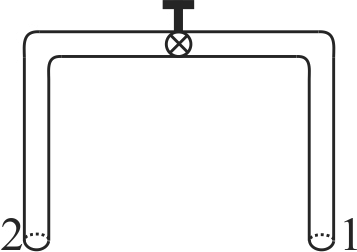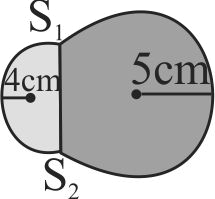361229
A glass tube of uniform internal radius (\(r\)) has a valve separating the two identical ends. Initially, the valve is in a tightly closed position. End 1 has a hemispherical soap bubble of radius \(r\). End 2 has sub-hemispherical soap bubble of radius \(r\) as shown in figure. Just after opening the valve.
361229
A glass tube of uniform internal radius (\(r\)) has a valve separating the two identical ends. Initially, the valve is in a tightly closed position. End 1 has a hemispherical soap bubble of radius \(r\). End 2 has sub-hemispherical soap bubble of radius \(r\) as shown in figure. Just after opening the valve.
361229
A glass tube of uniform internal radius (\(r\)) has a valve separating the two identical ends. Initially, the valve is in a tightly closed position. End 1 has a hemispherical soap bubble of radius \(r\). End 2 has sub-hemispherical soap bubble of radius \(r\) as shown in figure. Just after opening the valve.
361229
A glass tube of uniform internal radius (\(r\)) has a valve separating the two identical ends. Initially, the valve is in a tightly closed position. End 1 has a hemispherical soap bubble of radius \(r\). End 2 has sub-hemispherical soap bubble of radius \(r\) as shown in figure. Just after opening the valve.

